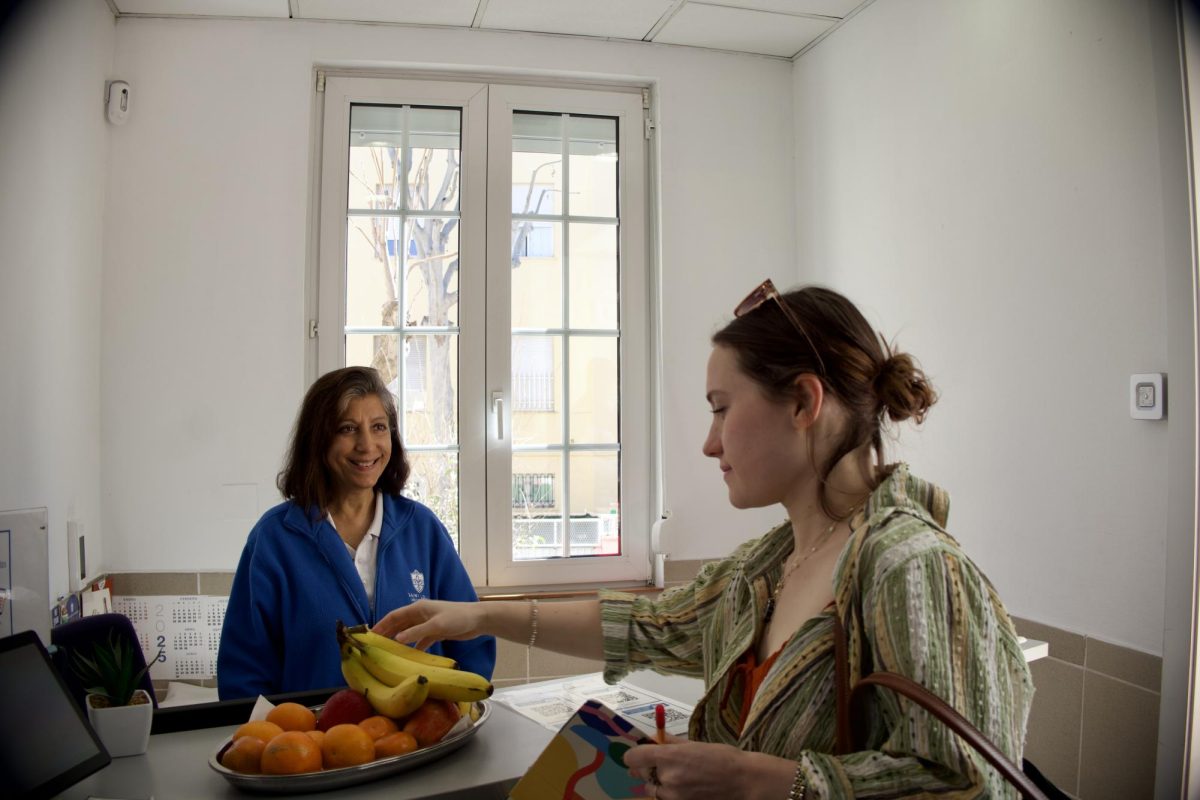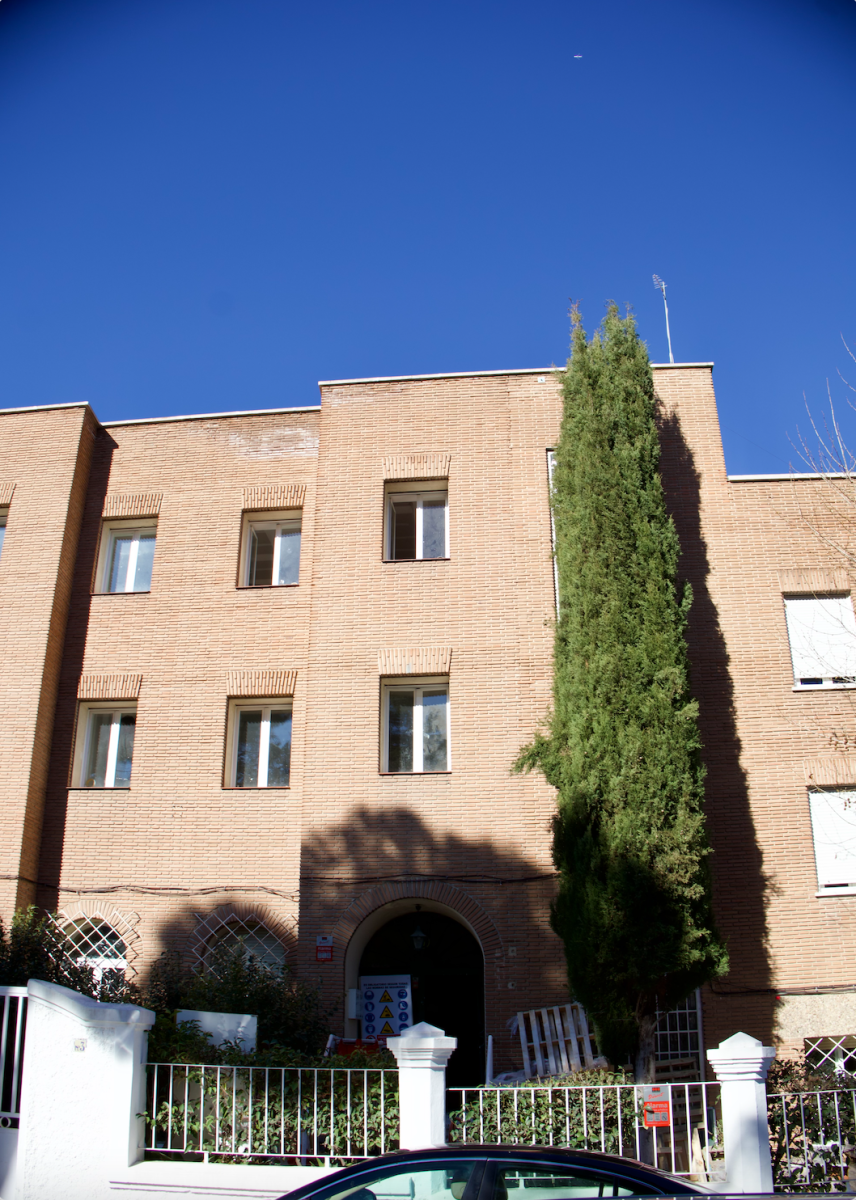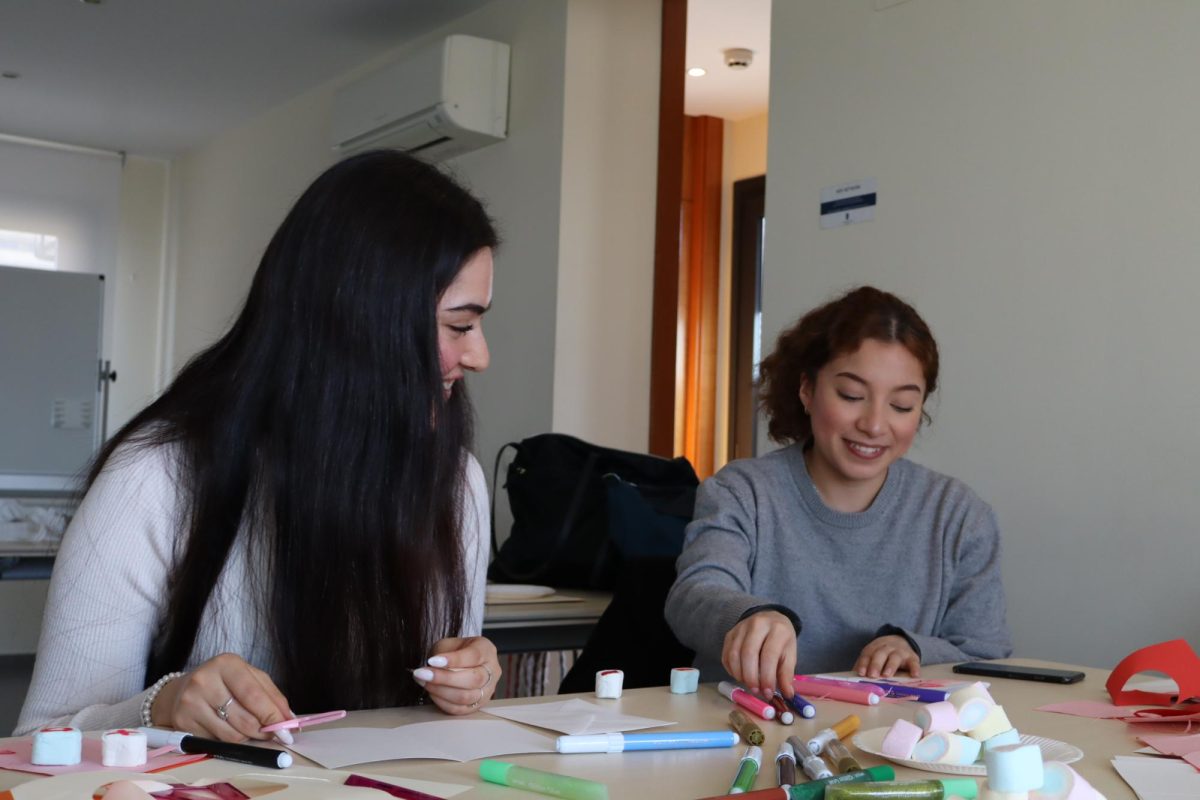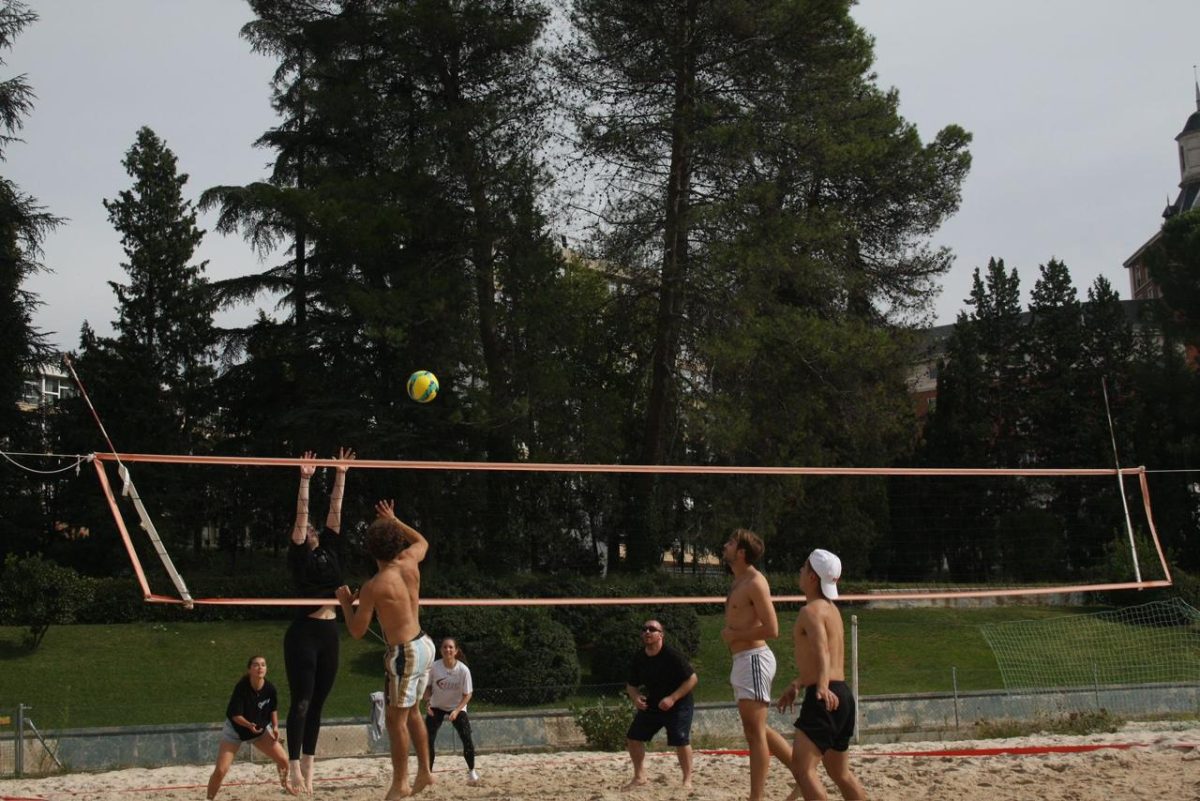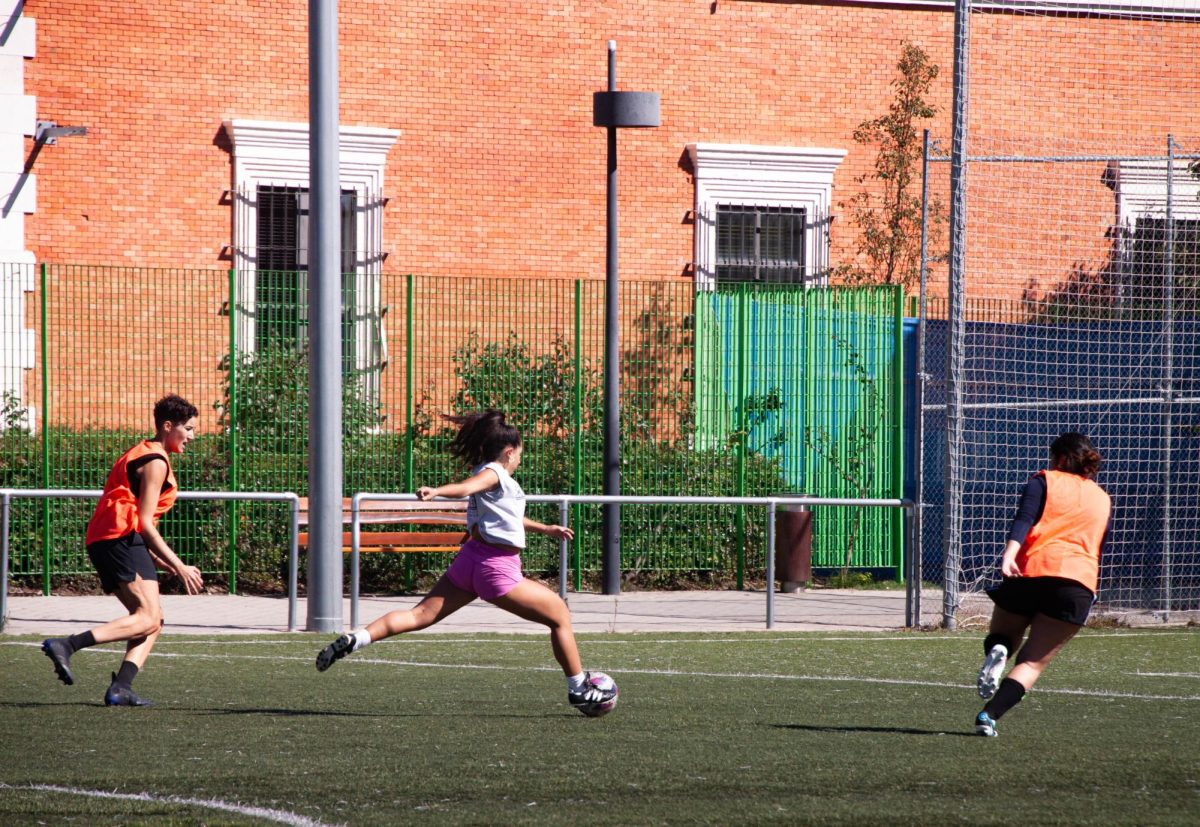Carlos Villar’s first incident with public displays of affection (PDA) was in 1991 in Madrid when he was just five years old, playing near the parking lot outside his kindergarten. A nearby car caught his attention: windows all foggy, bouncing up and down, with muffled sounds exiting the backseat. Villar and his friends rushed to the car trying to defog it out of curiosity, when an angry half-naked man appeared from inside, screaming at the children. Carlos’s mother rolled her eyes as the children ran to their parents’ arms in fear.
The next thing he knew, a fellow parent began beating the car-sex man.
“Disgusting! Don’t fight in front of the kids,” Villar remembers his mother’s scolding.
Years later, as Villar recounted the tale, a chuckle escaped his lips.
“Like most people who were born in the 80s we have experienced and witnessed inappropriate PDA firsthand,” Villar said. “Figures, my mother was more disturbed by the men fighting than the couple having sex near a kindergarten.”
Villar’s story mirrors a Spanish reality: In Spain, public displays of affection are a cultural norm, based on the country’s history, culture, and economy. Many Spaniards credit PDA to dictator Francisco Franco’s reign. During his regime, Franco banned all public displays of affection, leading to an increase in sexual progressivism in the 1970s after his death, according to the European Review of History.
However, this is just one explanation. Daniel Chornet, an intercultural communications professor at SLU-Madrid, said most Spaniards live with their parents till their mid-30s, so privacy is scarce.
“Public spaces become the only space to experience intimacy,” Chornet said. “In other words, one becomes anonymous or invisible in a public place like Sol or Plaza Mayor.”
Chornet, a native of a small Valencian town, explained how PDA behaviors differ across regions in Spain. PDA in a small town isn’t as explicit because public spaces aren’t anonymous; everyone knows you, so the behavior decreases.
Some students like Charles Mut-Tracy, believe geography plays a more significant role, as compared to population size.
Lara Jane Hop, a 22-year-old Madrileña at SLU-Madrid, explains the connection between geography and cultural perceptions around open affection.
“PDA in Spain reflects our Mediterranean culture, highlighting the emphasis on personal expression, love, and the importance of close tactile relationships within families and couples,” Hop said. “We’re generally more comfortable with PDA than many Northern European, American, or Asian cultures who are seen as more conservative.”
Chornet and Villar said PDA was further normalized by Spain’s 1970s “cine destape”, translating to “uncovering cinema” or sometimes “stripping cinema”.
“During this time, films in Spain weren’t censored anymore,” Chornet said. “We have normalized violence and nudity in cinema, so much so, that watching people get shot on TV doesn’t seem to be a big deal nowadays.”
Villar explains further.
“This made PDA seem more natural. Since then, most people from my generation see it as something normal, not anything to be bothered with.”
This shift in perception, however, isn’t universal, as cultural nuances can still create tension with PDA. Josefine Marty-McAuliff, a student at SLU-Madrid who’s half-American and half-Spanish, feels a cultural tug-of-war with PDA.
“Seeing someone for the first time here without any hugs, it’s just not warm and affectionate,” Marty-McAuliff said. “It feels too professional. But the American in me still gets shocked every time I see people basically groping each other in public.”

Marty-McAuliff, who lived in Barcelona for three years during elementary school, recalled her first experience of PDA after living in America for so long. As music flowed through her earbuds, Marty-McAuliff patiently waited for her metro stop while on the train. Her eyes wandered around, only to see a couple in front of her making out aggressively, in the middle of a crowded train.
“I was kind of shocked, you know,” Marty-McAuliff said. “I remembered how passionate Spaniards are, but like nowhere is safe, you know, nowhere is off-limits. It was awkward, but I quickly averted my eyes.”
Around her, other passengers barely glanced at the couple.
Mut-Tracy also feels the tug of his American side when faced with PDA.
“There was a stairwell in my old high school and as soon as they saw me, they would start making out,” Mut-Tracy exclaimed, laughing in disbelief. “It’s like they were waiting for me to come their way to start inhaling each other’s mouths. It was just really annoying, like do this somewhere else.”
For many Spaniards, like Carlos Lindo, PDA is normalized within the millennial dating culture. However, not every couple indulges in PDA.
Lindo was walking to campus one day, holding hands with his girlfriend, another student at SLU-Madrid, who is half-American and half-Vietnamese. As they passed by one of his girlfriend’s professors, she let go of his hand, as she thought it would be weird for her professor to see his student holding hands in public with someone.
“I guess I just wasn’t aware of that,” Lindo said. “It’s so normal in my culture for a couple to be walking around together holding hands. I didn’t think it was inappropriate, but I got where she was coming from. She has more of an American perspective on PDA, so I understood it.”
Adjusting to Spain’s open expressions of affection can be difficult for some Americans, becoming a rich point. Caroline Fields, an American student at SLU-Madrid, recounted an unforgettable late-night walk near campus around 2 a.m.
She saw a couple on a bench being extremely intimate. The girl was in a short skirt aggressively straddling the man as cars and construction crew drove past. It was a busy and well-lit night.
According to Villar, Field’s negative reaction is more of an American perspective, as during his upbringing, public nudity and indifference towards personal space were way more common. Nobody cared that much about what couples did, as long as it didn’t directly affect their children, he continued.
While normalized in Spain, PDAs can present a challenge for incoming foreigners who haven’t been exposed to these kinds of displays. Hop, a psychology major, offered advice about the “unspoken rules” foreigners should know before coming to Spain.
“Avoid staring or laughing when you see this stuff, it’s not going to get you anywhere,” Hop explained. “Also don’t engage in excessive PDA in religious or formal settings, especially if you’re around older or conservative individuals to avoid creating discomfort.”
Villar, now a 38-year-old librarian/archivist at SLU-Madrid, believes PDA is all about perspective.
“In my opinion, Spain cares less about these things than other cultures,” he said, beginning to laugh. “I mean, during my college years, it wasn’t uncommon to see people have sex on campus. We are just more used to seeing people be all kissy kissy without it being an issue.”

